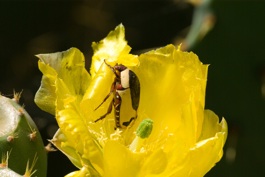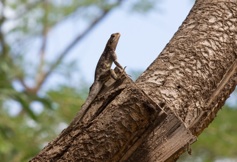kenyaView
Reptilia is the class of animals which are cold-blooded, breathe air, and have skin covered with scales, rather than hair or feathers. We saw the crocodile and some common lizards. We didn't see any snakes, although there are many species in the savannah, where they eat small mammals, birds and eggs, and are in turn eaten by birds of prey.
Order Crocodilia: Nile Crocodile, Crocodilus niloticus
Order Squamata:
Nile Monitor Lizard, Varanus niloticus
Agama Lizards, Agama agama
Common House Gecko, Hemidactylus mabouia
Striped Skink, Mabuya striata
Reptiles
Insects
The number of insects seen was much smaller than we expected. Although the trip was over the New Year holiday, and therefore after the 'short rains' rainy season was over, there seemed to be plenty of moisture around near the lodges. Although we wore insect repellent in the evenings, we had no trouble with insects. In the Nakuru lodge, mosquito nets were provided, but not in Amboseli or Maasai Mara, although the Maasai we talked to said that malaria was a big problem for them. There were only a few of species of butterfly and three species of dragonfly. There was one blue dragonfly, presumably a Libelluildae family Orethrum species, and one red type, presumably a Libellulidae Sympetrum species.
Since the nature of the safari experience meant that we did not usually get down from the vehicles, the huge numbers of beetles and grasshoppers which are important to the Savannah ecosystem were simply not visible, though present. The beetles are important for clearing away dung, which would otherwise cover the savannah.
We saw a lot of termite mounds, often wrongly called anthills, and these creatures also play a vital role in the ecosystem. Like the ruminant mammals, their bodies contain bacteria or other organisms which can break down cellulose. Termites remove and eat dead grasses and plants which might otherwise stifle new growth.
Finally, although we didn't see bees, we ate delicious acacia honey.


